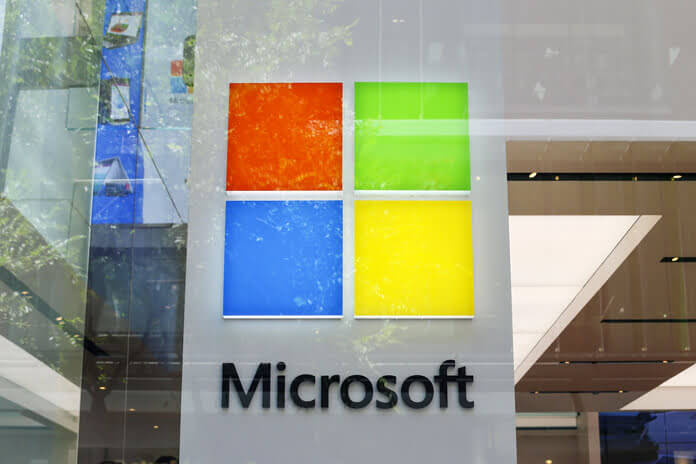Microsoft Stock (NASDAQ:MSFT)
Microsoft stock (NASDAQ:MSFT) is one of my favorite investments, and like many Seeking Alpha readers, I want to hold the company’s stock until retirement. The concept is simple: despite the fact that Microsoft stock has more than doubled in the previous several years and has clearly outperformed the market, I believe the firm is still cheap. But how cheap is Microsoft? It is clearly less expensive than it was a few months ago, having dropped by around 21% year to date. But this isn’t the point I’m trying to make. In this piece, I will outline three different methodologies that an analyst may use to evaluate Microsoft stock: (1) a similar multiples comparison, (2) a sum of the components valuation, and (3) a residual earnings model.
Notably, regardless of the valuation methodology, I estimate considerable upside for Microsoft.
Relative Multiple Comparison
The easiest approach to thinking about Microsoft stock’s value is to consider its stock multiples with respect to the sector. According to Seeking Alpha statistics, Microsoft is selling at a premium. For comparison, Microsoft’s one-year ahead P/E ratio is x26, implying a 19% premium to the industry median. The company’s P/B is x8.5, and P/S is x9, representing a 215% and 105% premium over the sector, respectively. However, examining multiples is a very shallow study. And, in my opinion, it has little worth.
Furthermore, I am certain that Microsoft’s valuation premium is more than warranted.
A valuation model should account for a company’s growth in order to provide appropriate relative multiple comparisons. And in my opinion, the PEG ratio does a great job of capturing the relative tradeoff between a company’s present stock price, current profits, and predicted growth. According to Investopedia, the PEG ratio is used to estimate the value of the stock while also taking into account the company’s predicted profit growth, and it is regarded to offer a more comprehensive picture than the more common P/E ratio.
The PEG ratio is computed by dividing a company’s one-year forward P/E ratio by its expected three-year CAGR. I believe an analyst should use analyst consensus forecasts to estimate the CAGR expectation.
I compute a PEG of x1.43 based on this approach for Microsoft. Notably, this is much less expensive than the identical statistic determined for other FAAMG firms – and significantly less expensive than what I calculate for the overall market (S&P 500 reference). Microsoft looks to be substantially less expensive than both Apple and Amazon, with a PEG of 2.6 and x3.1, respectively. Only Google has a slightly better PEG ratio.
An analyst may fairly argue that Microsoft stock should trade at the FAMMG universe’s average PEG multiple, which is close to x2.3, in my opinion. Accepting this ratio, I calculate the company’s implied P/E to be around x41. If an investor adopts this logic, MSFT shares would be appropriately valued at roughly $427/share (a 60% upside).
Sum-of-the-Parts Valuation
Microsoft has three major business units: productivity and business processes, intelligent cloud, and personal computing. The sum of the parts valuation is based on the premise that if an investor can discover an acceptable valuation for each of a company’s individual business sectors and add them together, he may assess its intrinsic worth.
The difficulty, however, is in identifying plausible assumptions.
This valuation model also implies that a firm may be divided and sold without difficulty and that there is no/little synergy between the components. Of course, this is not a realistic assumption. Nonetheless, in my opinion, the SOTP assessment might be a worthwhile appraisal exercise.
That being stated, here are my assumptions about Microsoft’s business units:
Processes and Productivity: This division earned approximately $63.4 billion in sales and $29.7 billion in operating profits in the fiscal year 2022. Given that high-growth software businesses sometimes trade at x15 sales multiples – and that these firms are also less profitable than Microsoft – I contend that an x12 Sales multiple would be a sensible and cautious anchor.
This would put the segment’s worth at $760.8 billion.
Intelligent Cloud: This sector earned approximately $75.3 billion in revenue and $32.7 billion in operating profits in the fiscal year 2022. Following the same logic as in ‘Productivity and Processes,’ I estimate an x12 Sales multiple to be realistic. As a result, I arrive at a valuation of $903.6 billion.
Personal computing generated around $59.66 billion in revenues and $21 billion in operating profitability (FY 2022 reference). This sector, in my opinion, is best valued using an operating income multiple, and an x25 EV/Operating Income should be reasonable. Thus, the Personal Computing segment is worth $525 billion.
Adding the segment valuations and accounting for Microsoft’s net cash of $26.35 billion results in an equity value of $2,215.80 billion.
The projected market capitalization divided by the number of outstanding shares yields a reasonable target price per share of around $297.10 (12% upside).
Residual Earnings Model
In my perspective, the most accurate valuation technique is the residual earnings valuation, but it is also the most difficult. According to the CFA Institute:
In theory, residual income is net income less a charge (deduction) for the opportunity cost of common shareholders in creating net income. It is the revenue that remains after deducting the costs of all of a company’s capital.
For Microsoft’s residual earnings value, I make the following assumptions:
- To anticipate revenues and earnings per share, I use the Bloomberg Terminal’s consensus analyst projection. I estimate that the consensus will last until 2025. Everything following that, in my opinion, is just too speculative.
- I estimate MSFT’s equity cost at 7.5%.
- For the terminal growth rate beyond 2025, I choose 3.5% nominal GDP growth. This is, in my perspective, quite conservative. Investors should keep in mind that the firm invests more than 20% of its revenues in R&D. • Investors who want to assume a different cost of equity and/or terminal growth rate should consult the sensitivity table that I have provided.
- I do not model any share repurchases, which supports a conservative value.
My residual earnings model for Microsoft produces a base-case target price of $368.64/share (about 40% upside).
Conclusion
It’s difficult not to like Microsoft stock. Since the corporation first issued ownership to the public, the software behemoth has significantly outpaced the broader market. And I believe Microsoft is still reasonably priced.
In fact, I gave three methods for valuing Microsoft in this post, and all of them calculate significant upside. For the multiple relative comparisons, I compute a target price of $427; for the sum-of-the-parts valuation, I consider $297 to be reasonable; and for the residual earnings model, an investor may assume a $369 anchor. This gives me confidence that Microsoft stock’s finest days are yet ahead of it. I grade Microsoft stock as a Buy.
Featured Image- Megapixl @ Boggy

















